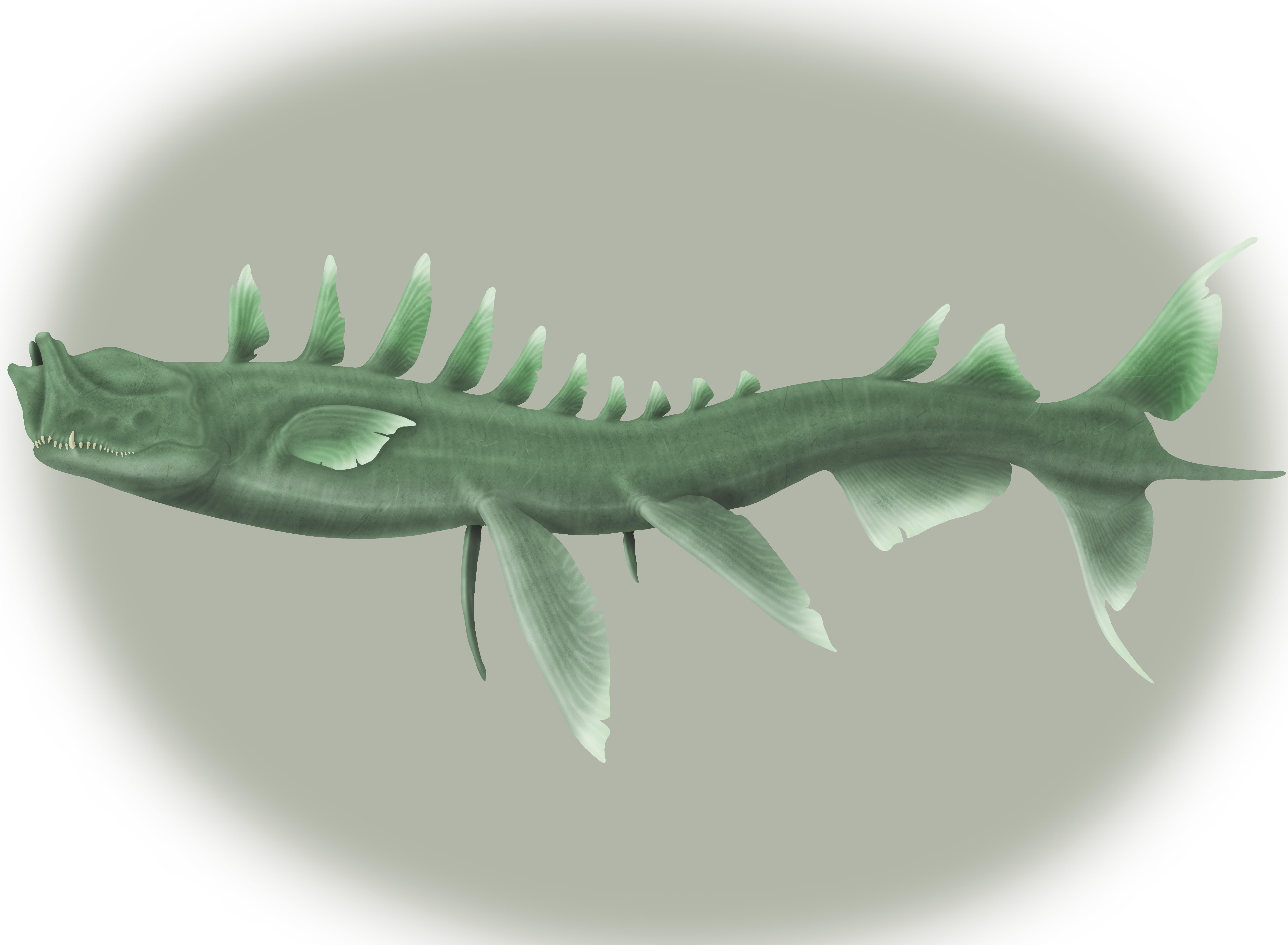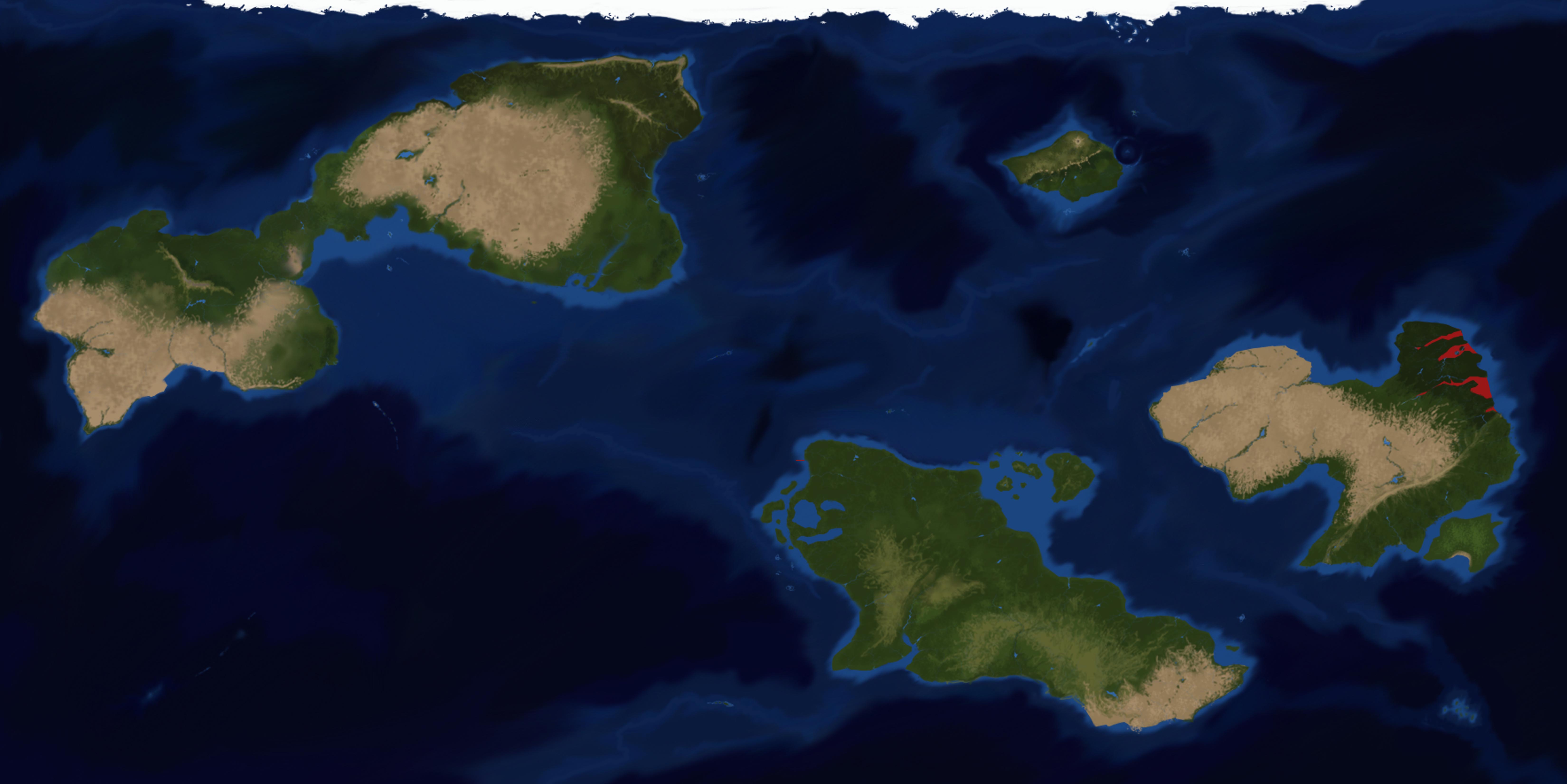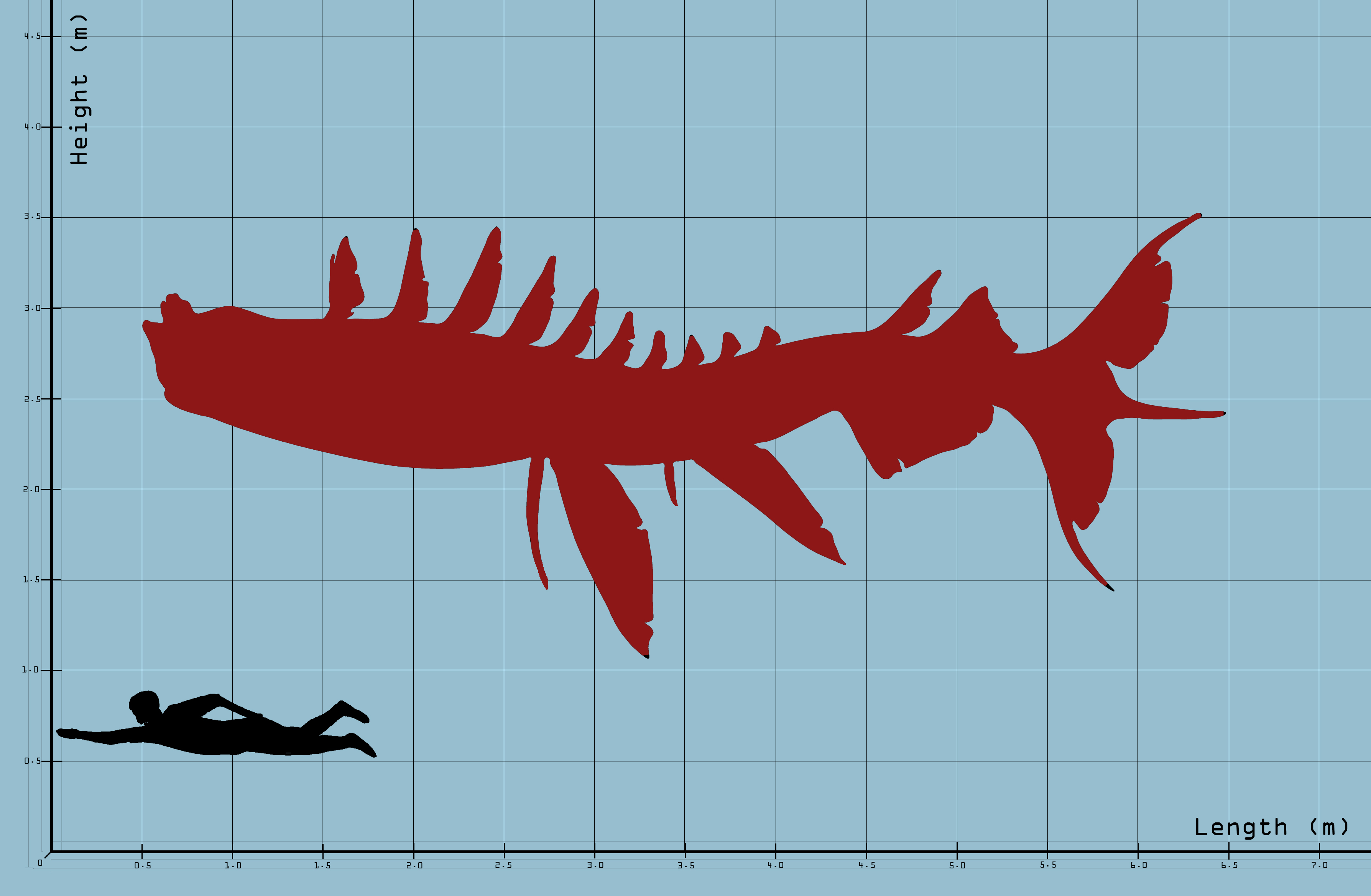Xenomuraena amplicephalus
Xenomuraena amplicephalus is a species of Xenomuraenid Radiopinniserpentoid amphibian from the lower mouths of the Najeete's marshlands.
This smaller cousin of Xenomuraena aequus lives only in the southern sections of the marshes, where the waters are clearer and competition from Thanatomuraena is smaller, allowing this particular species to take on the role of apex predator of the open waters.
The vegetation of the area it lives in is a darker green compared to the northern variants, prompting this species to assume a darker colouration to camouflage against it.
Compared to its larger relative, this species is much more active in its hunting style, preferring to hunt animals resting on the water's surface, coming in for a drink along the shores or chasing smaller free-swimming amphibians.
The higher, thicker head is used by the animal to headbutt plant trunks to make arboreal creatures among the branches above the water, fall into it.
X. amplicephalus, much like its northern relative, is quite harmless towards humans unless provoked, this is why the southern waters are usually more densely populated as the pressure from open water predation is much smaller.
The electrical web released by the sensorial foramens on the horn-like structures make the animal aware of its surroundings, perceiving even the slightest disturbance provoked by moving objects inside its field of view.
Depending on the size and shape of the encroaching body, the Xenomuraena will know if it could possibly be food or not.
Although harmless, the animal sometimes pokes boats to check if anything falls in the water but won't actually hunt humans that fall in, with the most gruesome attack ending on the animal biting and immediately letting go as soon as it recognizes what it bit into.
Most human societies of the southern Najeete hunt the species for food, even though its meat is not particularly appraised as exquisite.
The animal can be cooked on a grill in large steaks, it has a strong, almost sour flavour if undercooked, it can be accompanied with several broad-leaved salads and synthetic lemon flavouring.
Basic Information
Anatomy
- Head high and strong, long horn-like structures riddled with sensorial foramens.
- Forehead high and thick.
- Body elongated and eel-like, frontal end of it thicker.
- Twelve dorsal fins run along the length of the body and tail.
- Pectoral fins large and broad.
- Anal I & II large and leaf-shaped, growing along the middle point of the body.
- Anal III long and sub-rectangular, growing along the Gill Tail.
- Gill fan high with a steeep caudal drop, tail continues after the end of it.
- Caudal fins large and broad, with long terminal sections.
Genetics and Reproduction
Unknown mating selection processes.
The animal will mate in early summer and early winter, migrating upstream to do so.
How they mate or choose their partner is currently unknown.
What's currently known, however, is that females will lay their eggs on land along the littoral clearings of the thick swampy terrain.
The eggs are long and brown, resembling rotting branches as to avoid scavengers.
The eggs will hatch after thirty to fourty days and the offspring will immediately make their way to the low depth zone, where they'll pass the first stage of their lives.
Growth Rate & Stages
Ontogenesis very evident in the species.
Young specimens are born with very large and wide anal fins terminating in small hooks they use to move around on land and into the water, where they'ìll pass the first few months of life as a demersal animal.
The head in young specimens is smooth, suggesting the animal will pass the first stage of its life completely blind.
The natal aculeus is lost sometime after the first month of life.
Ecology and Habitats
Epipelagic species found in the medium to high depth zone of the southern Najeete Marshes, at depths between 5 and 20 m.
They stay in clearer waters compared to the northern cousin or among the thick vegetation, where they camouflage better.
Dietary Needs and Habits
Predatory animal that adopted several different hunting techniques depending on what they are going after.
The main hunting technique is an ambush predatory behaviour in which the animal will lay still in the water, casting its electric web into the water in wait for prey to pass by.
Another major predatory behaviour this animal shows is the headbutting of tree trunks to make arboreal creatures fall in the water.
Biological Cycle
Periannial creature with no dips in activity year long.
Additional Information
Social Structure
Lonesome animal that doesn't tolerate conspecific into its own territories.
Will attack any smaller members of its species and potentially cannibalize them.
Domestication
Impossible to keep in captivity due to its size and the space required for it to live confortably.
The few specimen that were ever brought into a captive environment died not too long after their transfer; apparently the electric signals bouncing off the aquarium walls would disorient the animal.
Uses, Products & Exploitation
Of minor economic importance for human consuption by local populations.
Perception and Sensory Capabilities
Uses electrolocation to perceive movements around it, good hearing.
Symbiotic and Parasitic organisms
Afflicted by Intestinal Tube Worms and False tooth parasites.
Sometimes carrier of fin-eating parasites and diseases of the skin, rarely contagious to humans.
Genetic Ancestor(s)
Scientific Name
Eumuraenia; Radiopinniserpentoidea; Xenomuraenidae ; Xenomuraena; X. amplicephalus
Lifespan
55 Years
Conservation Status
Least Concern: No measures underway to protect the species
Population Trend: STABLE
Average Weight
200-700 kg
Body Tint, Colouring and Marking
Green body with a lighter countershading.
Fins tipped in a lighter hue.
Remove these ads. Join the Worldbuilders Guild












Comments